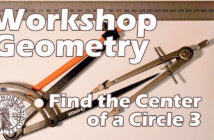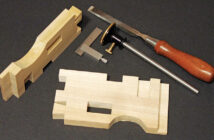The Biggest Wins:
Kurt Hertzog talks us through what he calls ‘the biggest wins’…
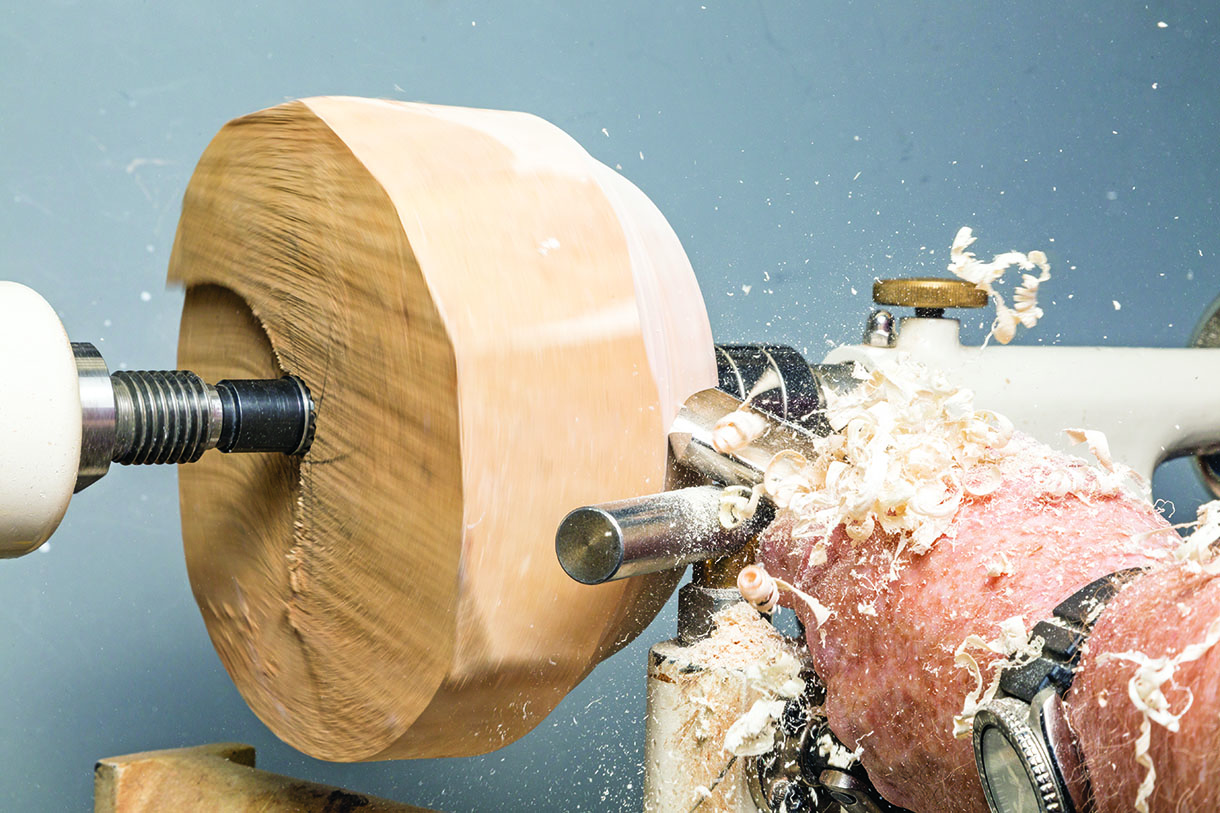
Kurt Hertzog talks us through what he calls ‘the biggest wins’…
If you’ve been turning for any length of time, you’ve probably accumulated a large selection of tools. Always added with a perceived need in mind, the quantity of tools tends to outstrip our real needs and often, our tool storage space. Which tool you pick up to use does matter. You’ll select the type based on the cut to be performed and the size based on the project at hand. Avoiding the cheap joke, in my opinion, the biggest tool wins. The inherent advantages to the bigger tool are: more mass, which dampens vibration and reduces flexing; longer length improving resolution, mechanical advantage, grip/body contact options and cutting edge length with the versatility and enlarged ‘sweet spot’.
All things considered, you’ll do well to reach for the biggest tool you can lay your hands on that will fit into the cut being made. Not meant to be a controversial statement, but more of a good rule of thumb that will get the job done in the safest most efficient manner. Let me support this with my reasoning.
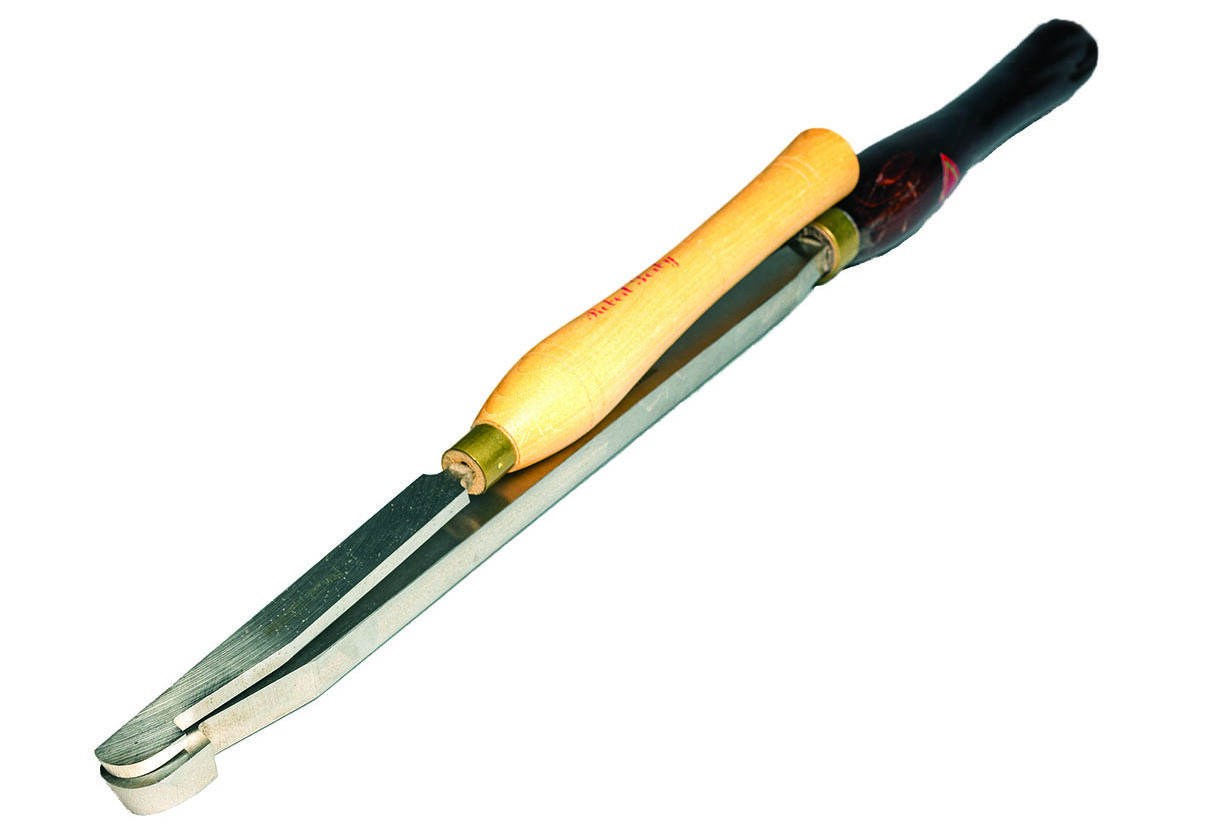
Reaching too far or asking too much causes mishaps. Get sufficient mass, length, strength and leverage
Safety
The safe use of your tools is in your hands, no pun intended. Putting too much force on a tool, whether it is smaller than needed or improperly sharpened, can be the cause for incidents. You purchase or make your tools based on their intended use. Selecting the correct type of tool for the task is only part of the equation. Selecting the correct sized tool within that tool type is just as important. Using too small a tool for the task can do a less effective job than intended, particularly if you reach further over the rest than what it was designed for. Any time you ask more of any tool than it is designed for, you create a risky situation. Any oversized tool rarely presents a safe use issue. The old joke about ‘when in doubt get the bigger hammer’ applies. It is far better to under tax a tool than to ask too much of a tool.
Vibration
When you think of the enemies of good quality cuts, one that should be near the top of the list is vibration. It is obvious that if a tool is experiencing vibration of any sort, the cutting edge engaged with the wood will not be able to make the best quality cut. Vibration in the tool shaft will be carried to the tool tip with the potential to be chatter. A bigger tool has more mass both in the tool shaft and the handle than the smaller tool. The more mass, the more vibration dampening effect there is. Have you wondered why people install large weighty handles on tools? It is to minimise the vibration they experience in their hands and bodies. Adding mass to the tool handle can also enhance the feel and controllability when properly sized and placed. A shorter handle doesn’t present you with the ability to tuck it in nicely to your body. When you are selecting your tools for purchase, feel the heft of the tool. I suggest you get the tool that is larger and heavier. You won’t often be carrying it around. Most of its life it will be supported by the tool rest so take advantage of the highest mass you can when making your purchases.
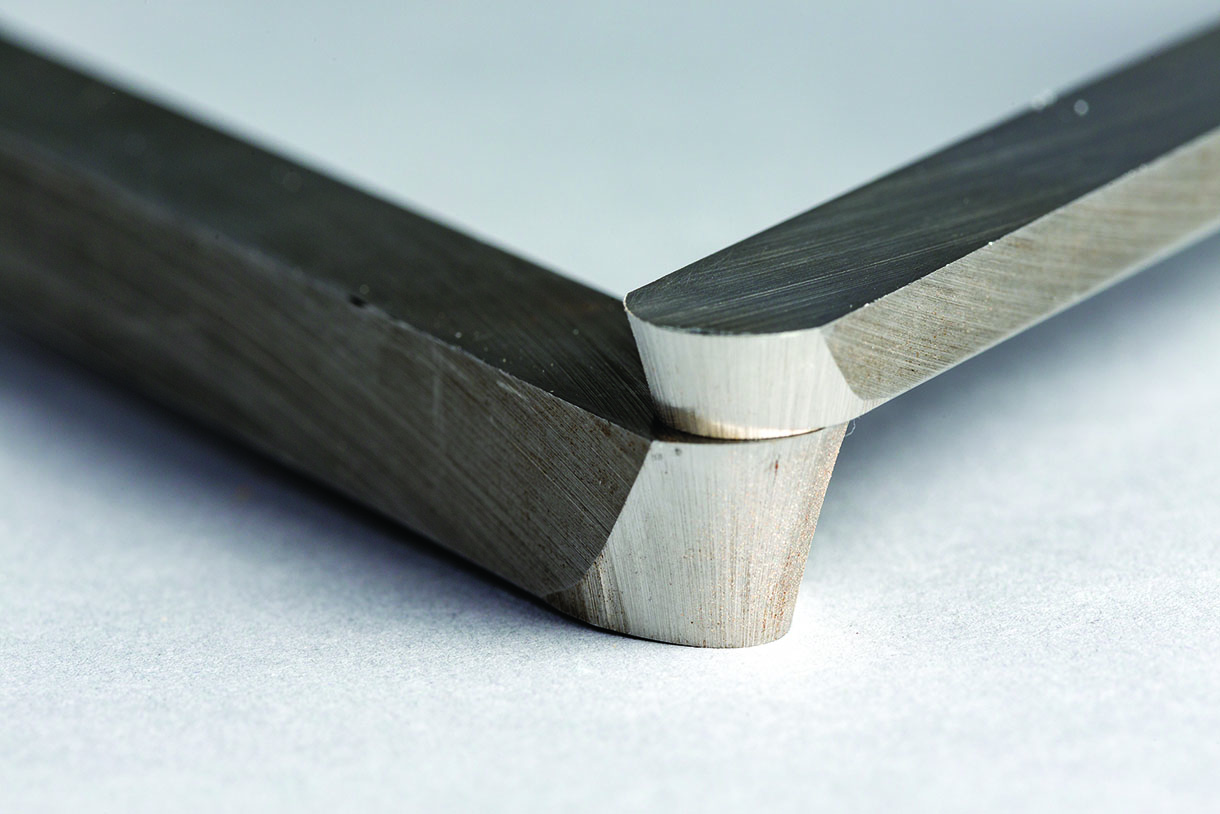
The same scraper face, but two very different tools. The greater mass tool will better dampen vibration
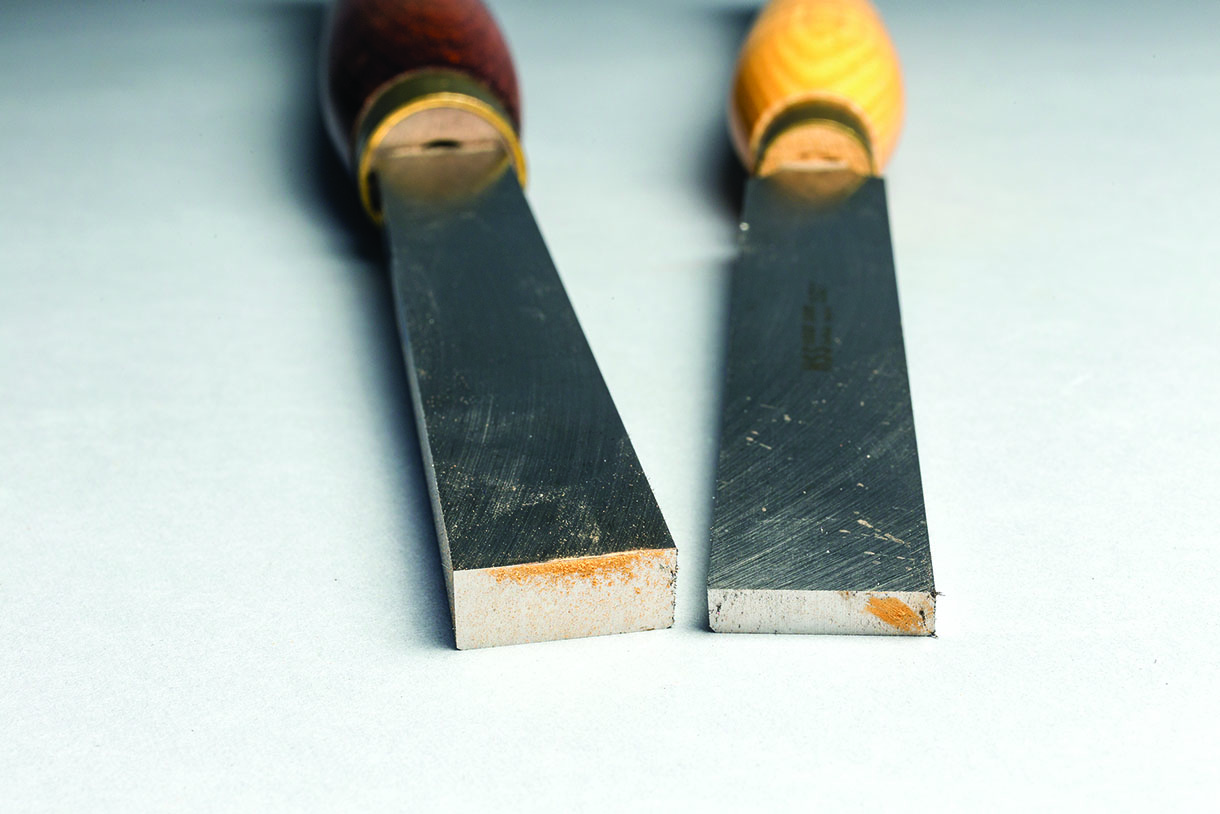
Given a choice, always reach for the more massive tool if it can possibly fit your application
Flexing
Flexing might be a subset of the category of vibrating. The flex that a tool might have could certainly enter into the vibration of the tool in use. Imagine performing a cut over the toolrest with a large tool. You exert the force needed to make a pretty serious cut. Now, imagine trying that cut with a smaller tool. The shaft of the tool won’t allow you to engage the same level of force without flexing. Chatter? Interrupted cut? Just plain flexing away? The larger the tool, the larger the tool shaft; the longer the tool is overall and the more reach over the rest that you can safely perform. Don’t underestimate this. More accidents are caused at the lathe by reaching too far over the rest for conditions. Those situations include speeds and feeds as well as the material, but mostly reaching too far with the tool being used. Safe reach is directly impacted by the size and length of the tool.
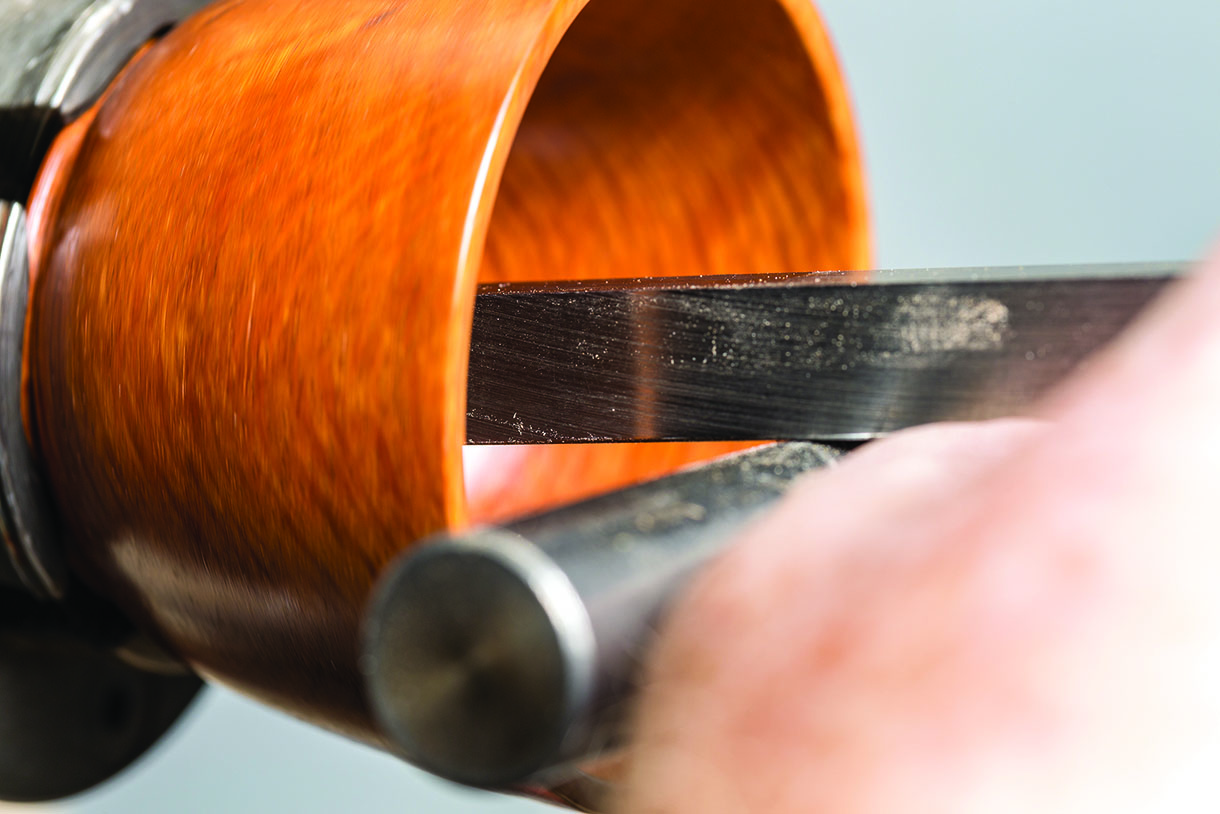
Keeping your reach within reason, a sturdier tool will not flex away from your cut or scrape
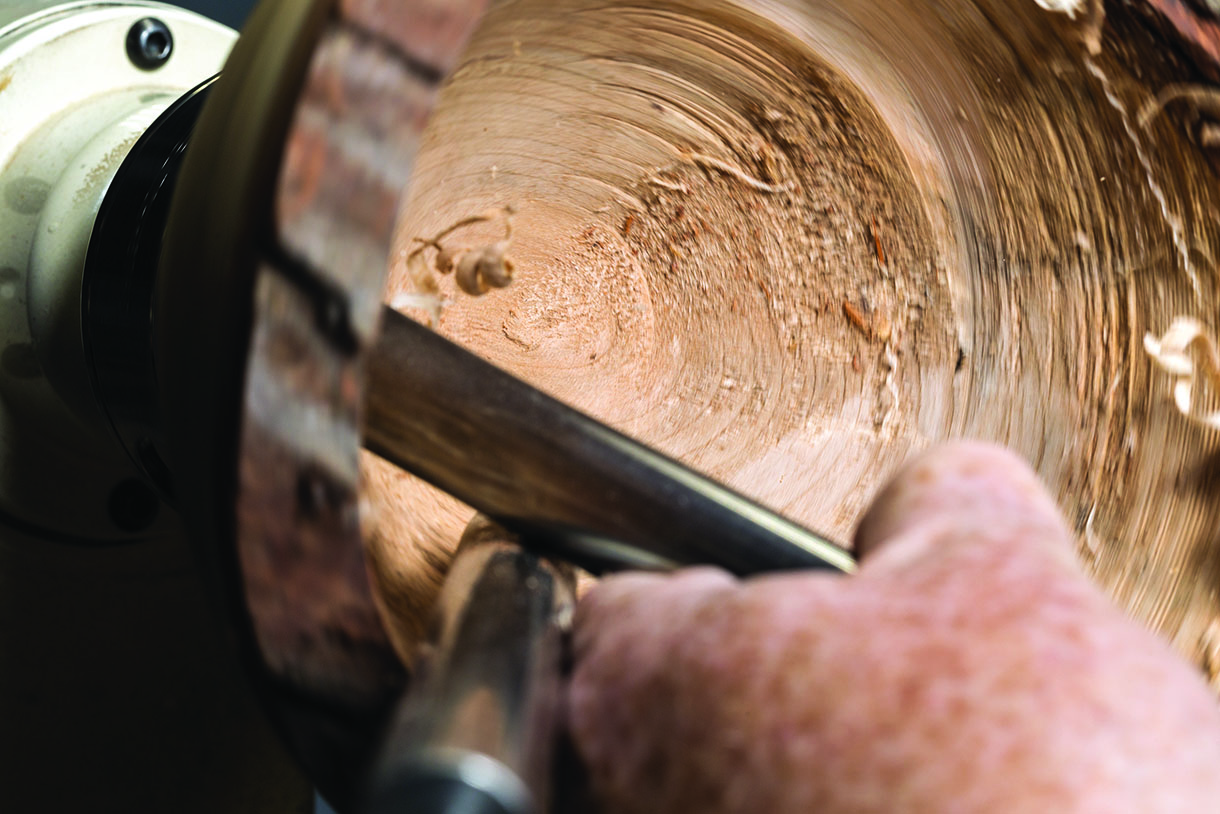
Not too common with the retailers any longer, my 25mm shaft bowl gouges have performed admirably
Control
The control (or perhaps more accurately the resolution) you’ll have manipulating the cutting edge is a function of your fulcrum effect. With a long bar and the fulcrum point very near one end, you have a very large amount of movement at the long end making very small movement at the short end. Like your tool, if you can move the butt end of the tool a considerable distance to move the cutter a small amount of distance, you’ll have very fine resolution and precise control. With a shorter tool and the fulcrum point being your tool rest at the same distance from the end, you’ll have far less resolution and mechanical advantage. Obviously, the control issues are a function of where the fulcrum, i.e. the toolrest, is with respect to the overall length. It is safe to say that the longer the tool, the more opportunity you have to take advantage of this effect.
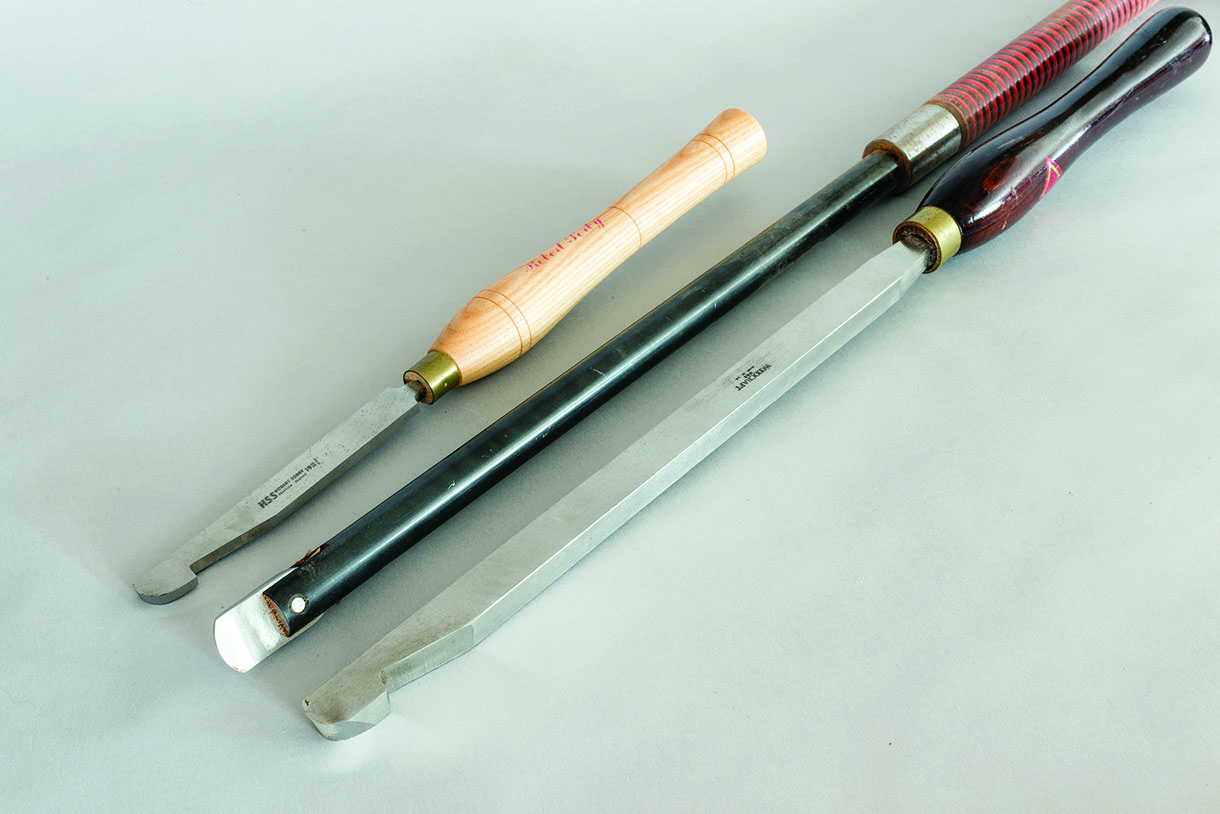
With the toolrest at the same position on each, the control differences are obviously enormous
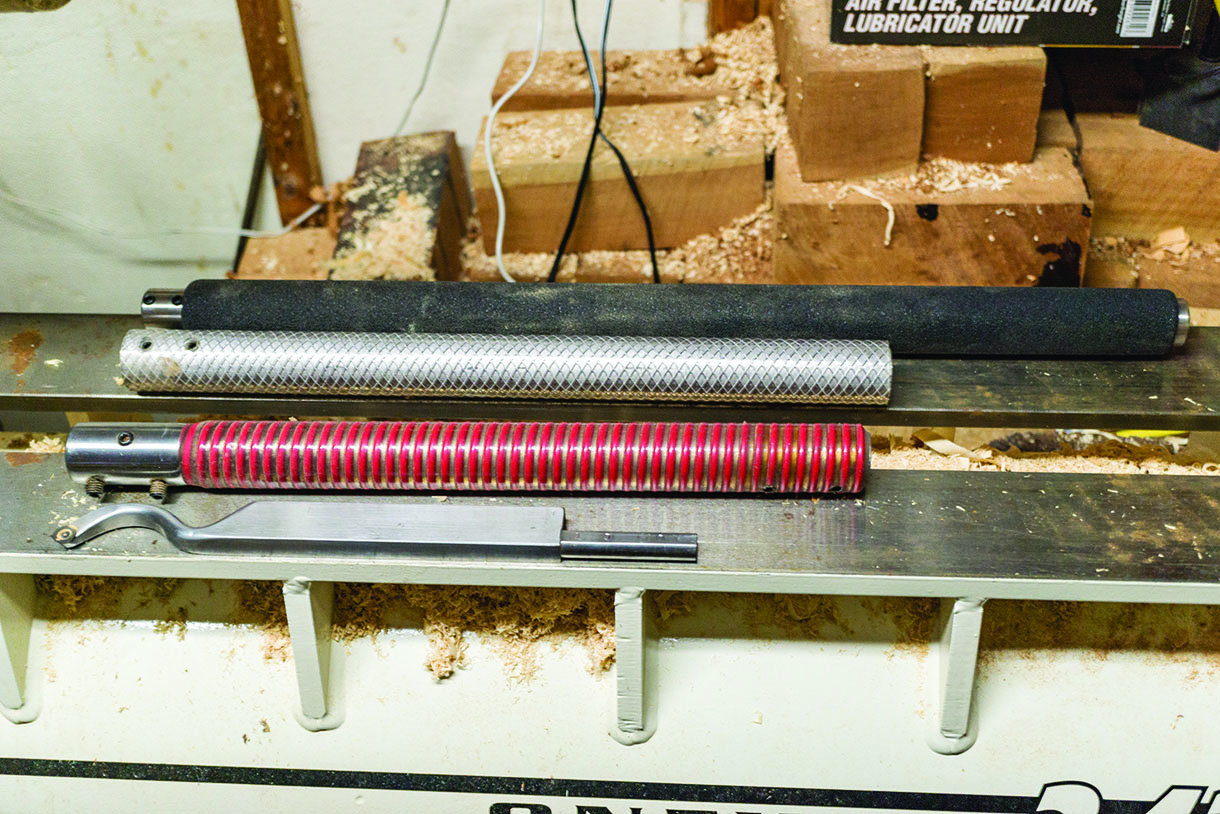
Un-handled tools give you the luxury of selecting the handle length and mass most appropriate
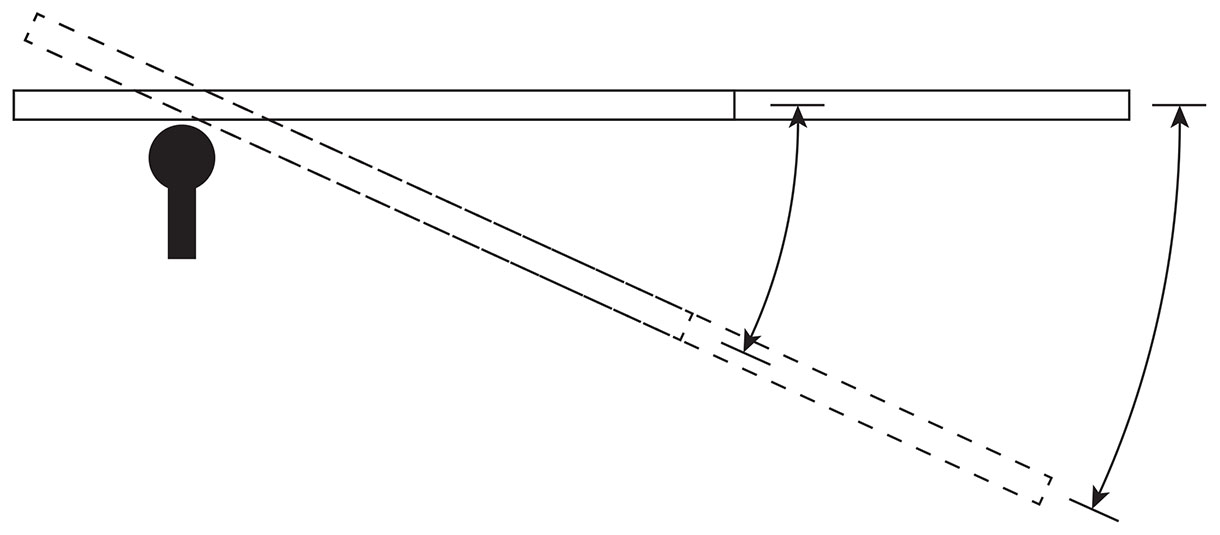
Mechanical advantage
With a larger tool comes a longer handle. That added length can provide improved resolution, as above, but also simple mechanical advantage of force. Because you’ll have a longer lever, you’ll have a larger multiplier of your force at the handle. The ratio of the distance from the cutter to toolrest to the distance from the toolrest to your controlling hand position will be the multiplier. If you want to ‘lean into a cut’, the mechanical advantage you’ll get because of the lever ratio can be enormous. Of course, the further you hang over the toolrest the lower the mechanical advantage will be. Suffice to say that you’ll have a lot to gain with a longer tool. Any reduction in force you need to supply to control the tool will make your fatigue lower at the end of your turning session. It might sound silly, but much like a good anti-fatigue mat, any bit of stress and strain that can be reduced helps and will make your turning session less tiring and more enjoyable.
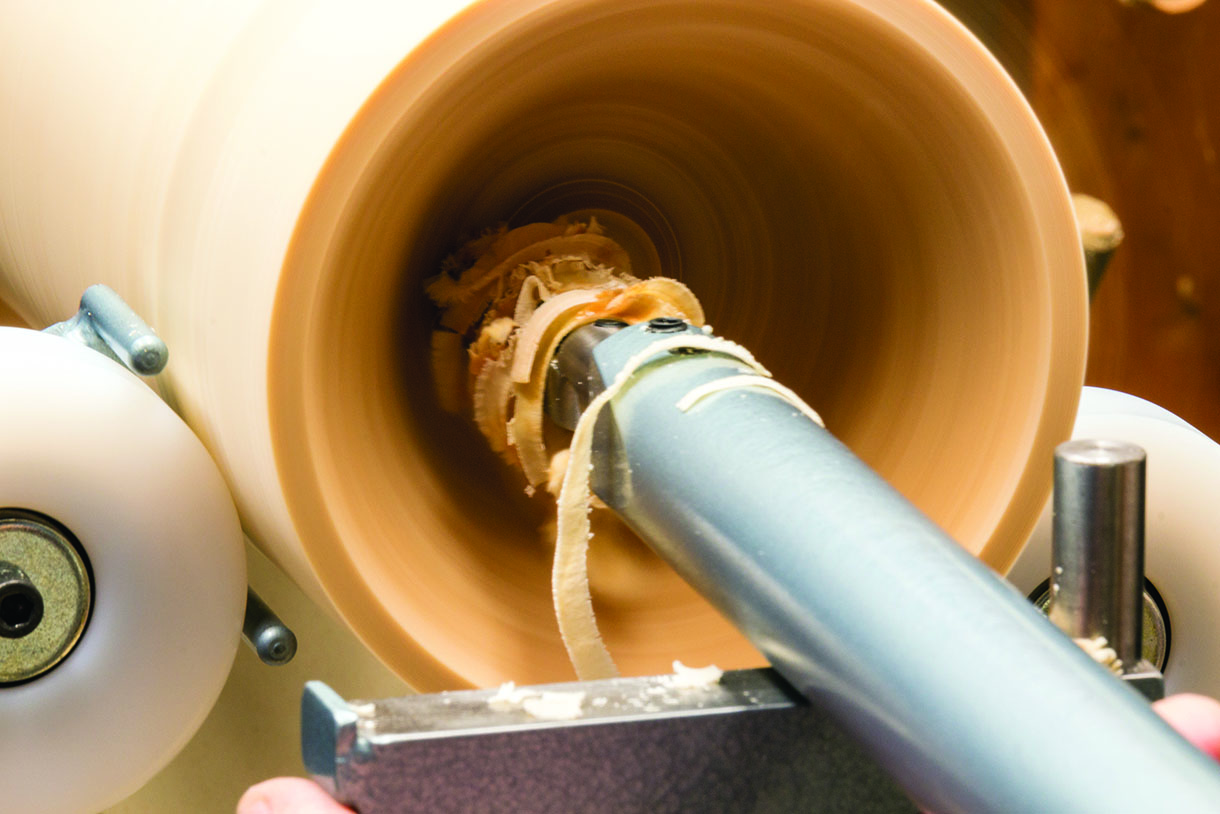
Hollowing rigs make great use of mechanical advantage. It uses support as close as can be done
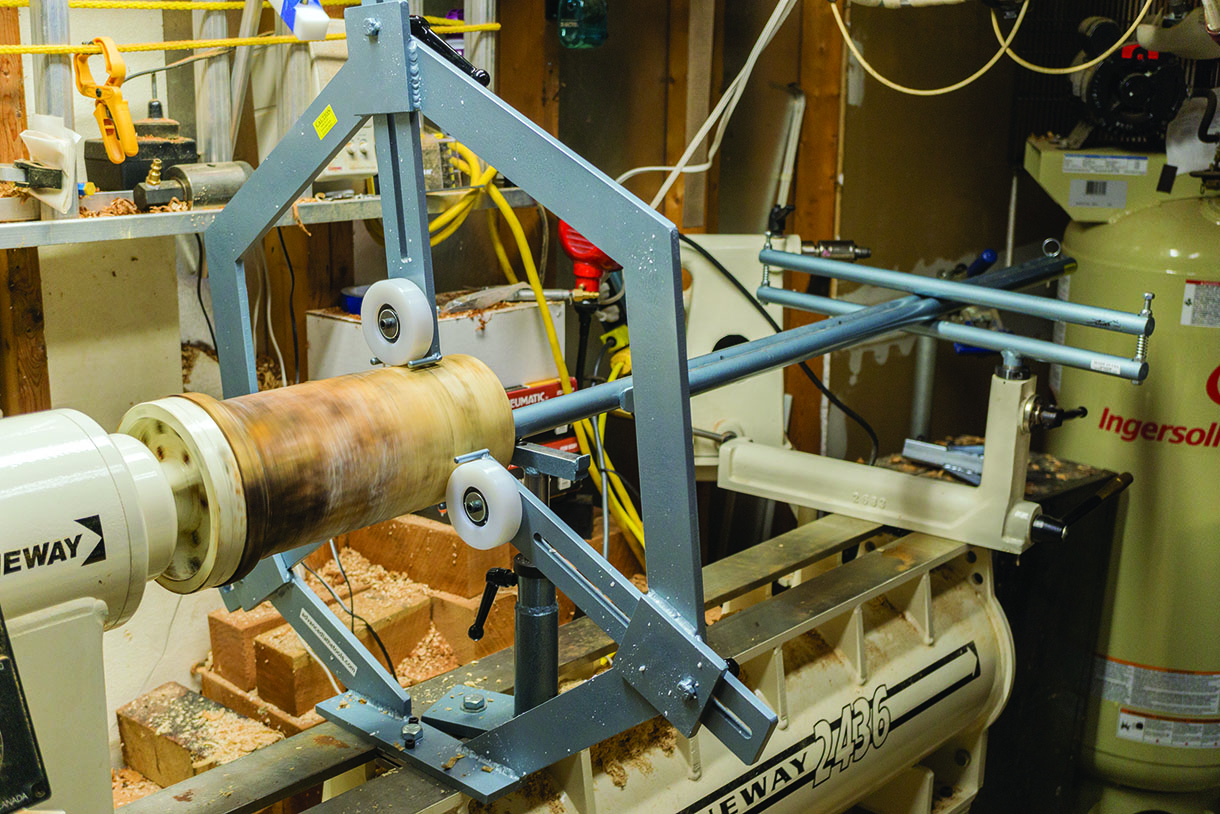
The huge mechanical advantage lies in the long, massive bar that is captured as well
Forgiveness
The bigger the tool usually means a bigger bevel to rub. That is beneficial. Also, any deviation from the sweet spot of the tool edge and its relationship to the cutting action can cause a problem. That can range from a lower quality cut to a catch. The easiest way to illustrate the point is with the skew chisel. Thinking of using your skew chisel in a planing cut situation. Your tool edge is presented to the work somewhere around 45° from the axis of rotation. While there may be some differing opinions on the numbers, the sweet spot for this type of cut is with the work contacting the cutting edge surface from about 25–50% of its length. You can deviate slightly in position on the cutting edge contact position and the angle, but if you stay in this area on both, you’ll rarely have any issues with your skew chisel cut. Minor tweaking of both the presentation angle and the contact position while performing the cut will indicate which gives you the best result. Once you deviate from the sweet spot areas, you are headed for trouble. Using the skew as an example, if the sweet spot is from 25–50% of the cutting edge, it stands to reason that the longer the cutting edge is, the bigger the sweet spot is and the more latitude you have for working. Small skew presents a small cutting edge length and the corresponding smaller sweet spot.
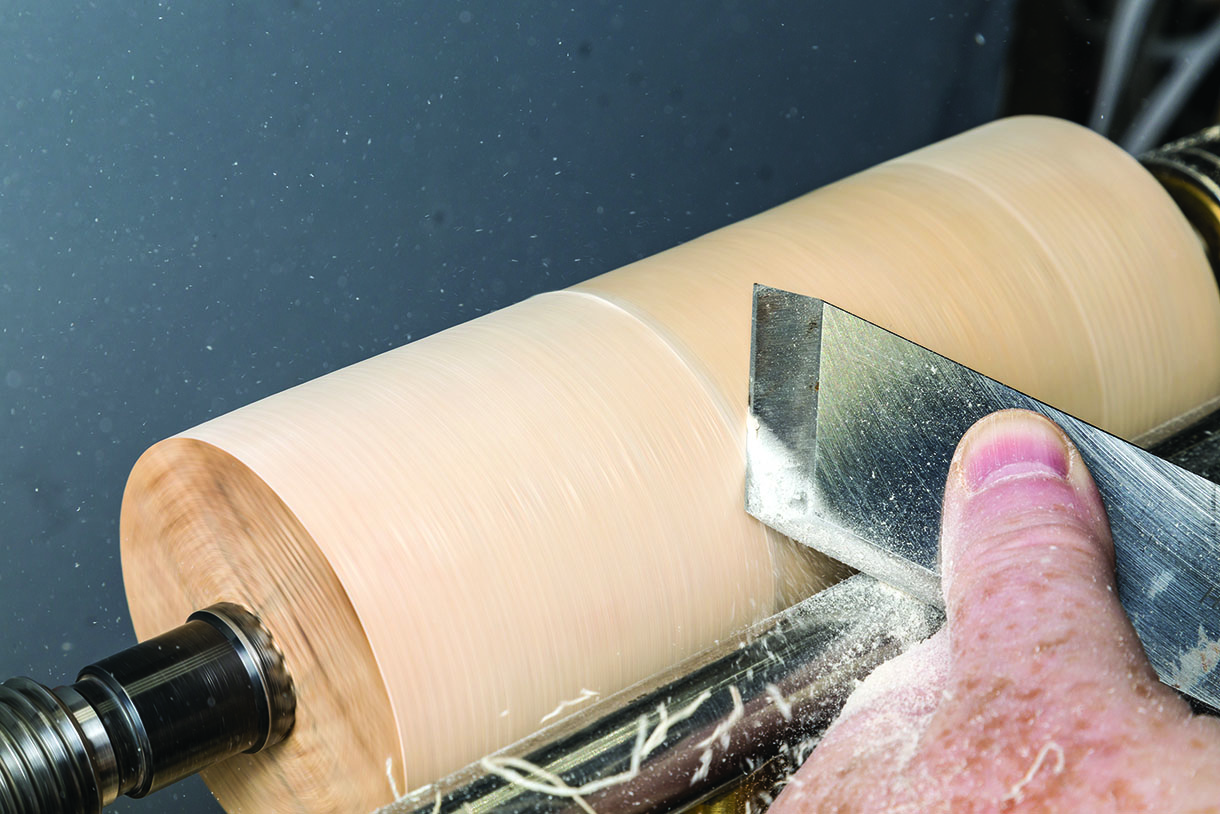
With the sweet spot between 25 and 50% of the edge, the bigger the tool, the bigger the sweet spot
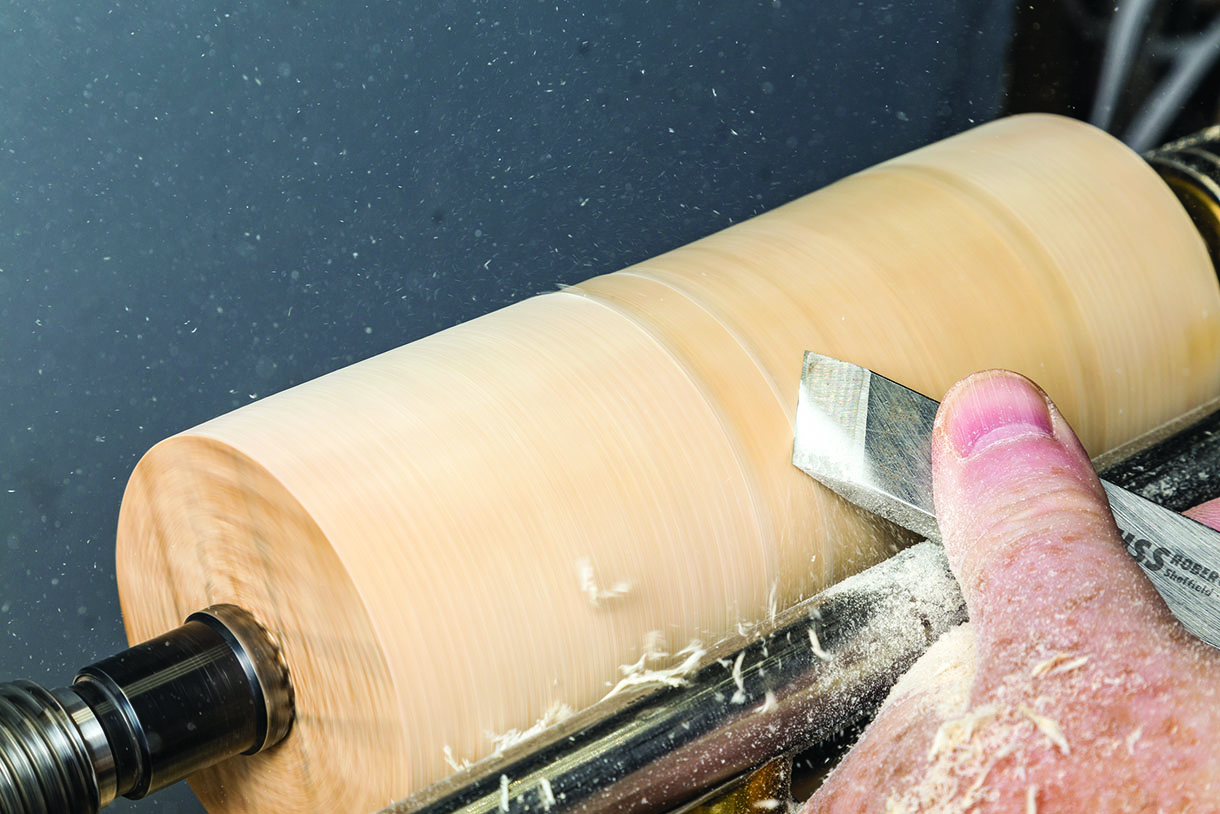
You can certainly use a smaller tool but I see nothing to be gained. It is less forgiving
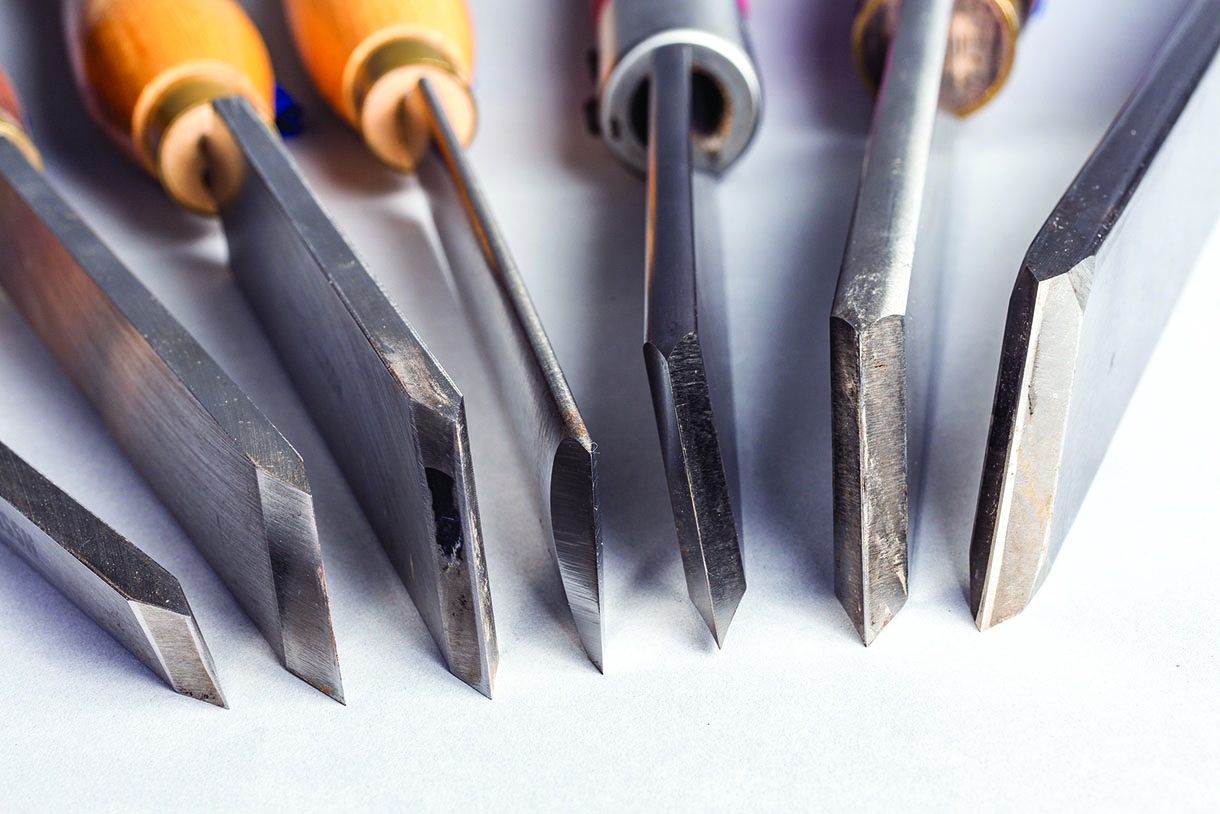
My workhorses. All rectangular shafts except one oval for fitting into very thin openings
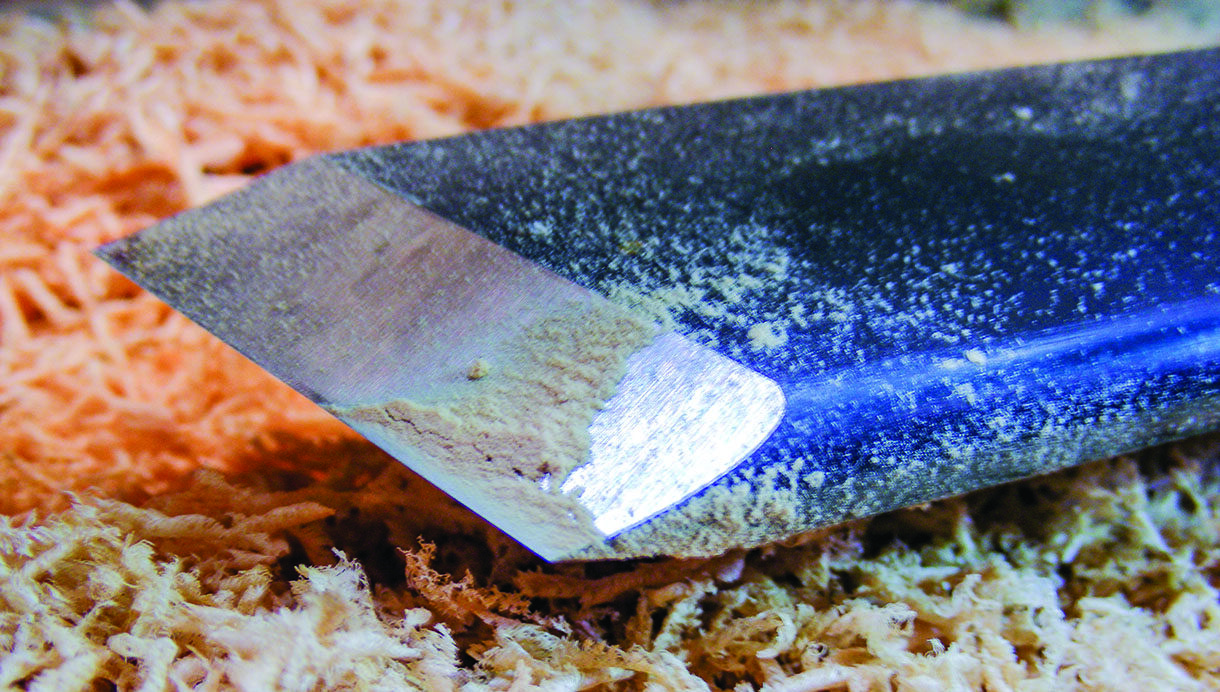
Find a large sized skew with a good heft to it and master it. That extra space in the sweet spot pays dividends
It is simply two things
Bigger tools have a bigger tool shaft and a bigger handle. The larger tool shaft reduces vibration, provides longer reach, and provides more area for a bigger cutting edge. Now, the bigger the handle, the longer and more mass it has. The longer handle impacts the points we’ve made about mechanical advantage and resolution. Both tool shaft and handle length and mass interact with many of the characteristics to but make things simple, it is easy to think about them as being important in these two areas. Are there rules of thumb for how big, how far, and how heavy? Shorter tools, shorter safe and effective reach. Longer and larger tools provide you the option of longer safe and effective reach.
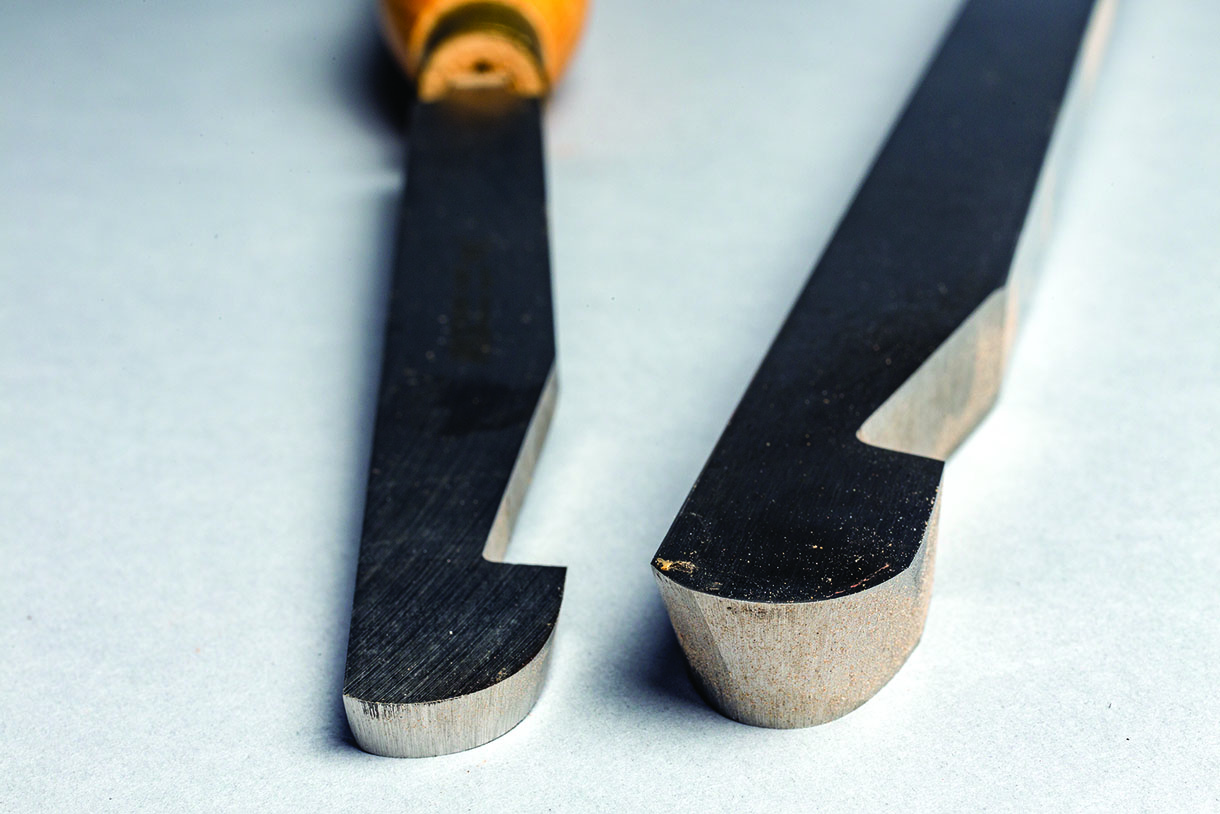
You can see that the standard scraper can’t reach very far over the rest and stay within Stu’s guidelines
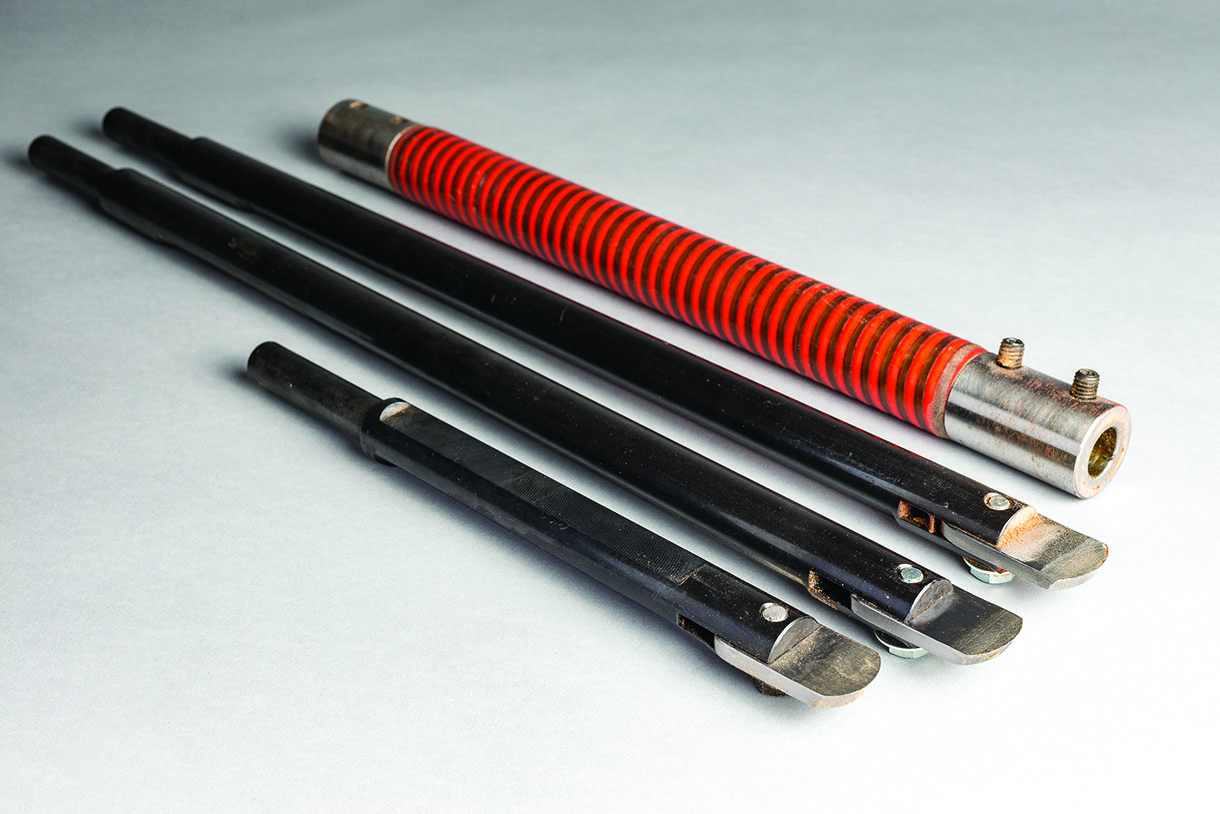
This scraping rig will get you to the suggested length to overhang. You can also add more length to the handle
Did you know?
Stu Batty recommends:
A good ratio of length of tool in front of the toolrest to the length behind the rest is:
1:5 for a standard gouge
1:7 for a standard scraper
1:3 for a negative rake scraper
Caution on engagement
Within reason, a larger amount of edge engagement is an advantage in many respects. That isn’t the case with scrapers. The biggest tool wins in the case of scraper too with a huge caution. The forces on the turning and the tool are proportional to the amount of engagement and the speeds and feeds. The temptation is to think that your bigger scraper lets you present a larger amount of edge to the work. You should always engage the amount of edge based on the forces involved, not the amount of edge that you could present. Any amount other than the same as you’d present with a smaller tool is too much. It is the recipe for an incredible catch.
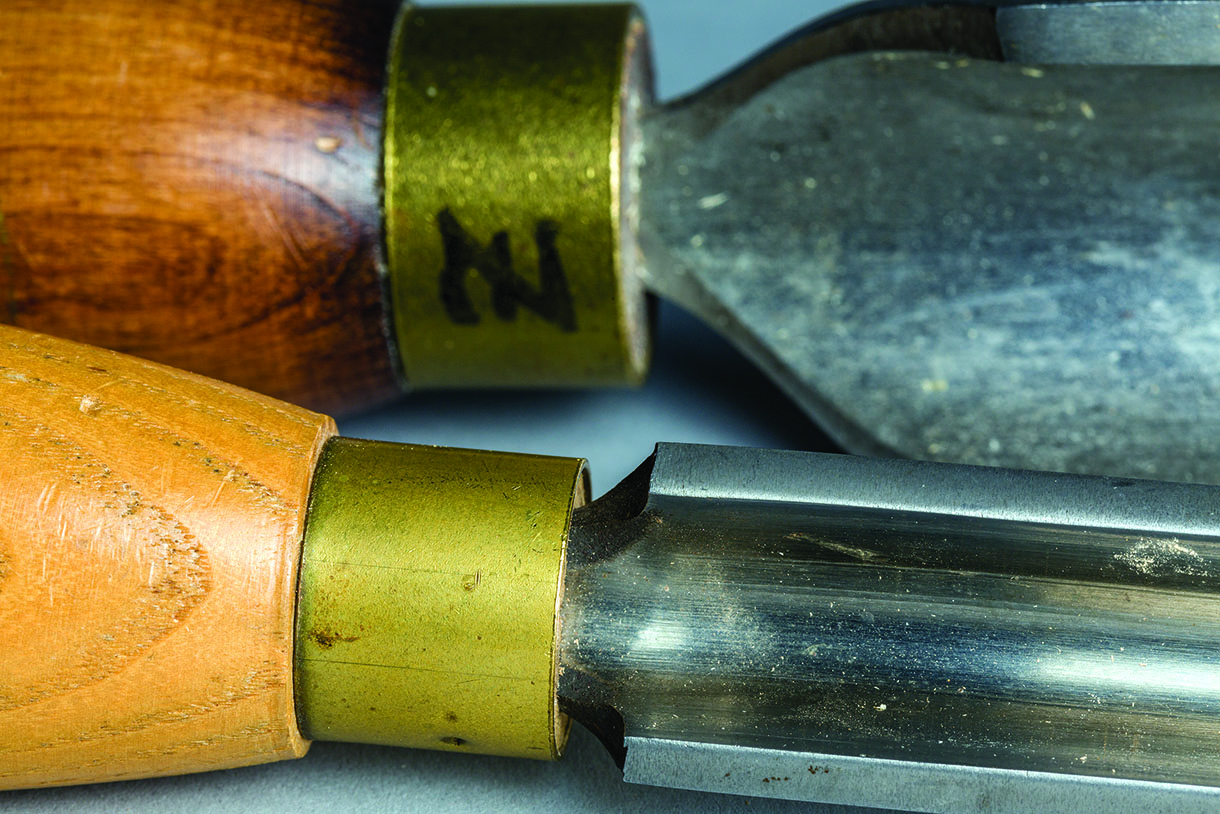
By design and manufacture, spindle roughing gouges are weakest right at the tool handle insertion point
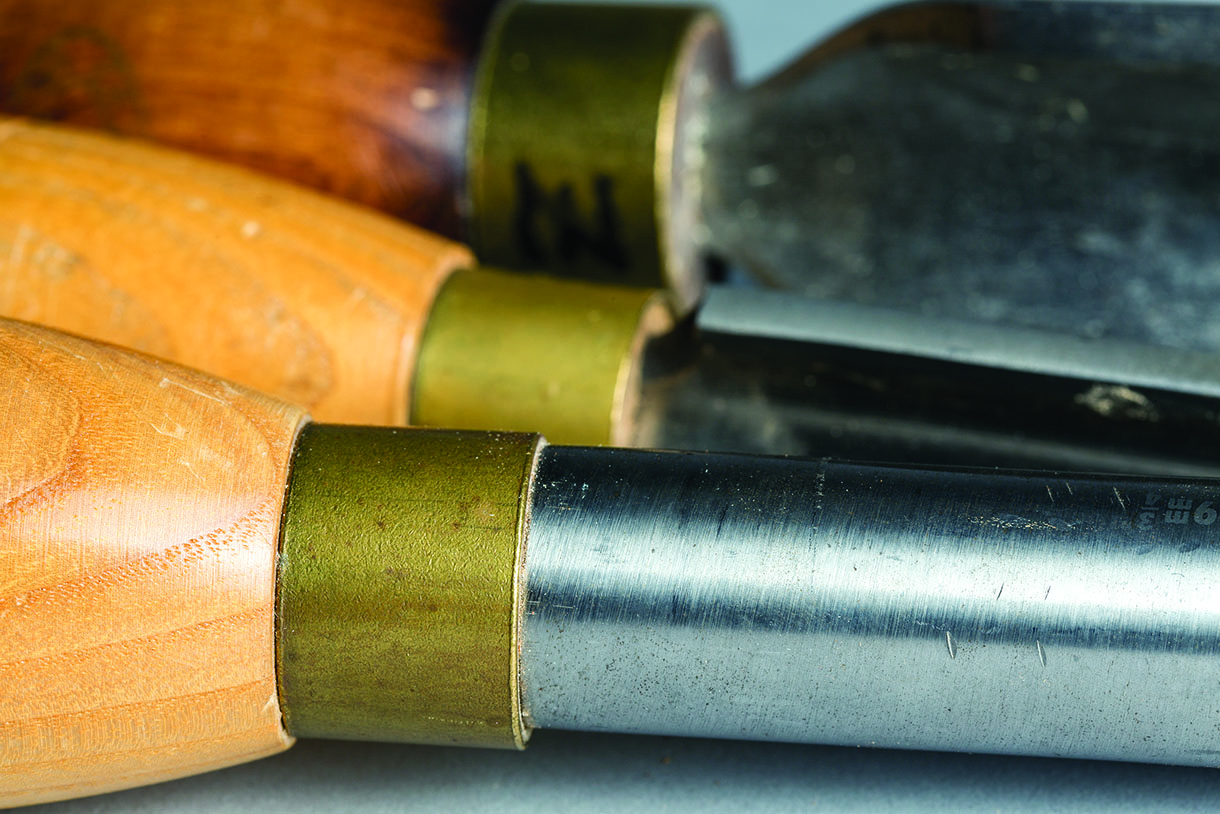
By comparison, my 25mm bowl gouge is incredibly strong throughout its length and dampens vibration wonderfully
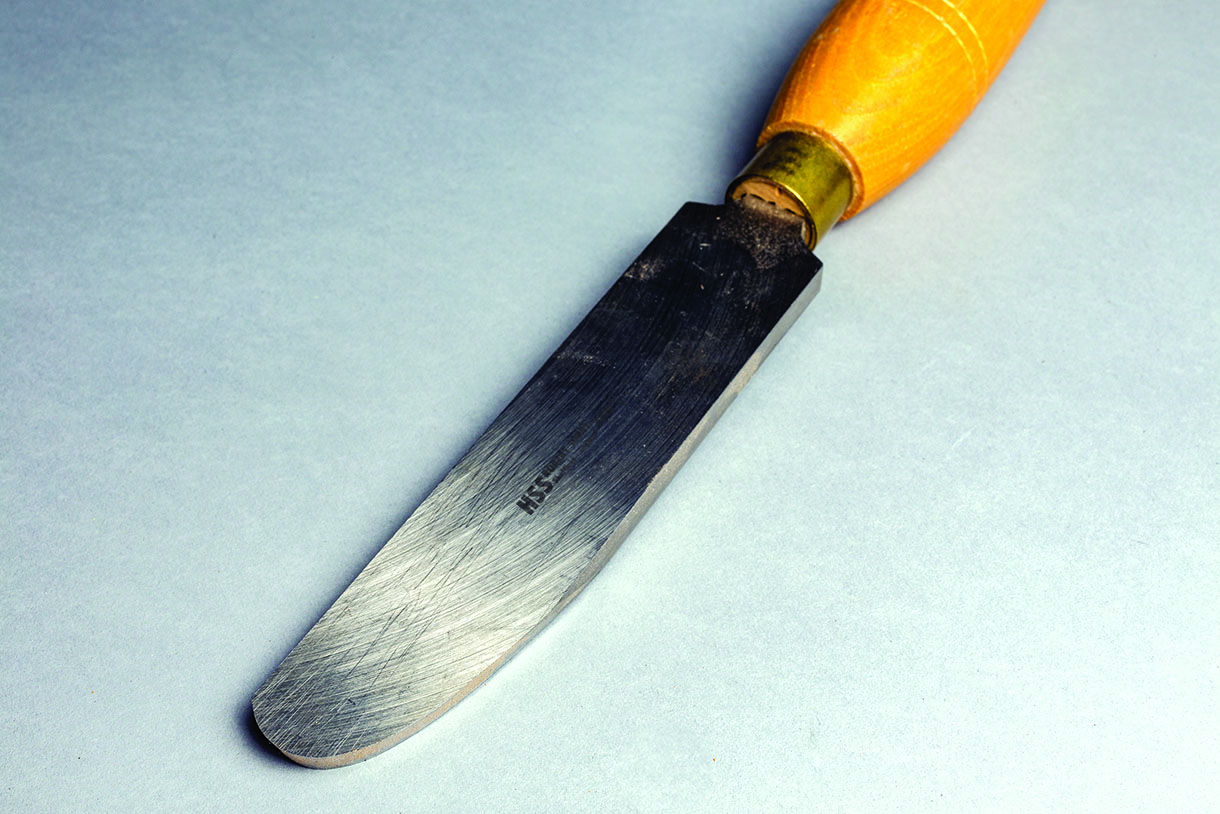
Big is good, but be cautious of engagement. Too much contact will create excessive forces and trouble
Exceptions to the Golden Rule
The saying ‘never say never’ holds true here. There are instances when using the biggest tool possible isn’t the correct answer. The time the biggest tool probably isn’t the answer is when the biggest tool will present too much cutting edge to the work. Even owning a 38mm spindle roughing gouge I sometimes opt for the 20mm spindle roughing gouge to reduce edge engagement. If I need dampening, I skip the spindle roughing gouges and go to my biggest bowl gouge. My 25mm bowl gouge takes nearly all of the impact rather than me receiving it. When roughing a bowl and doing the heavy work, the bigger the tool, the better. Once everything is done and I’m going to perform that very last finishing cut on the inside, I will sharpen and use my 6mm bowl gouge rather than my 20 or 25mm bowl gouge. This is based on the dexterity I feel with that tool. In this instance, the small size and lower mass gives me an increased sensitivity. Just that final continuous light cut fairing everything together. With a sharp edge and that feather cut being made, I will opt for the smaller tool because of the improved ‘feel’ I get making the cut. I certainly am not overtaxing the smaller gouge in reach or work effort. The smaller amount of edge presented makes that very light cut easy to make. Maybe it is purely psychological but I find I can control that slightly smaller tool for a better result in this instance.
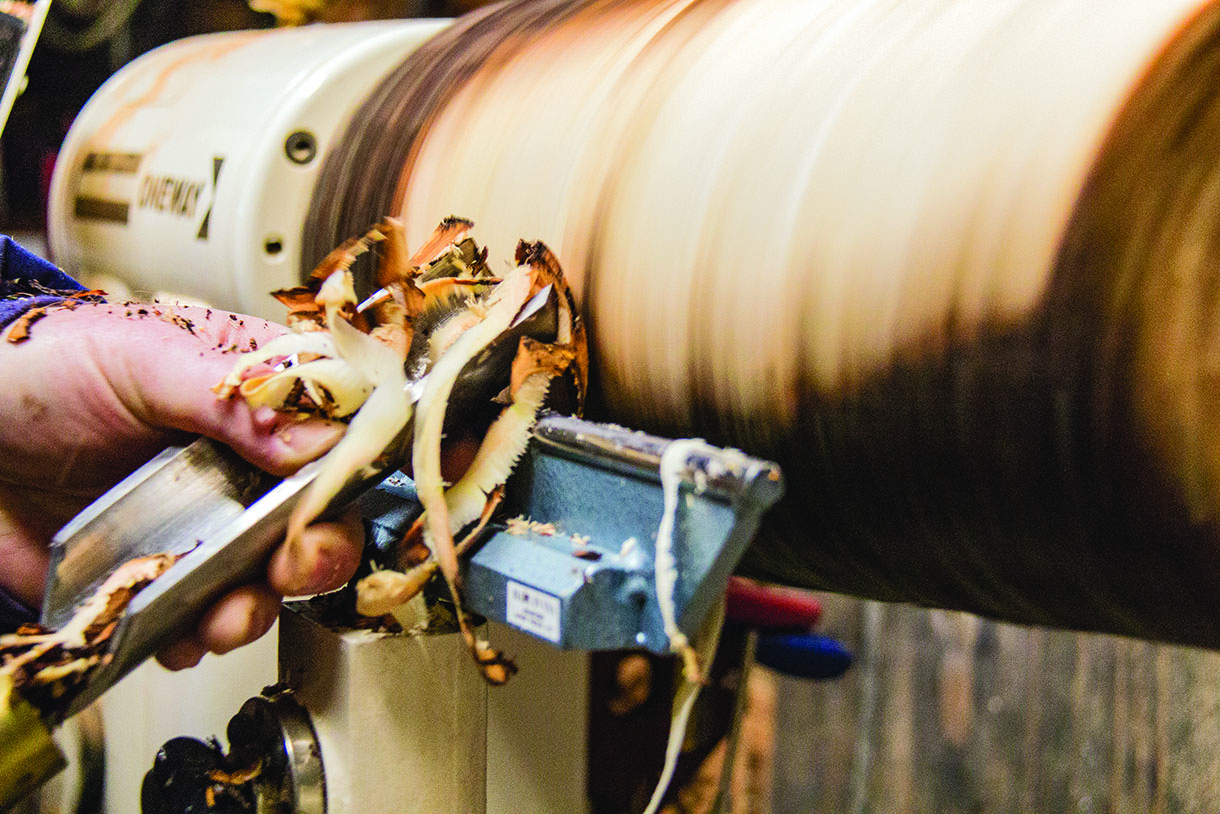
For the most part, a large spindle roughing gouge is the correct tool but be cautious of too much ‘edge’
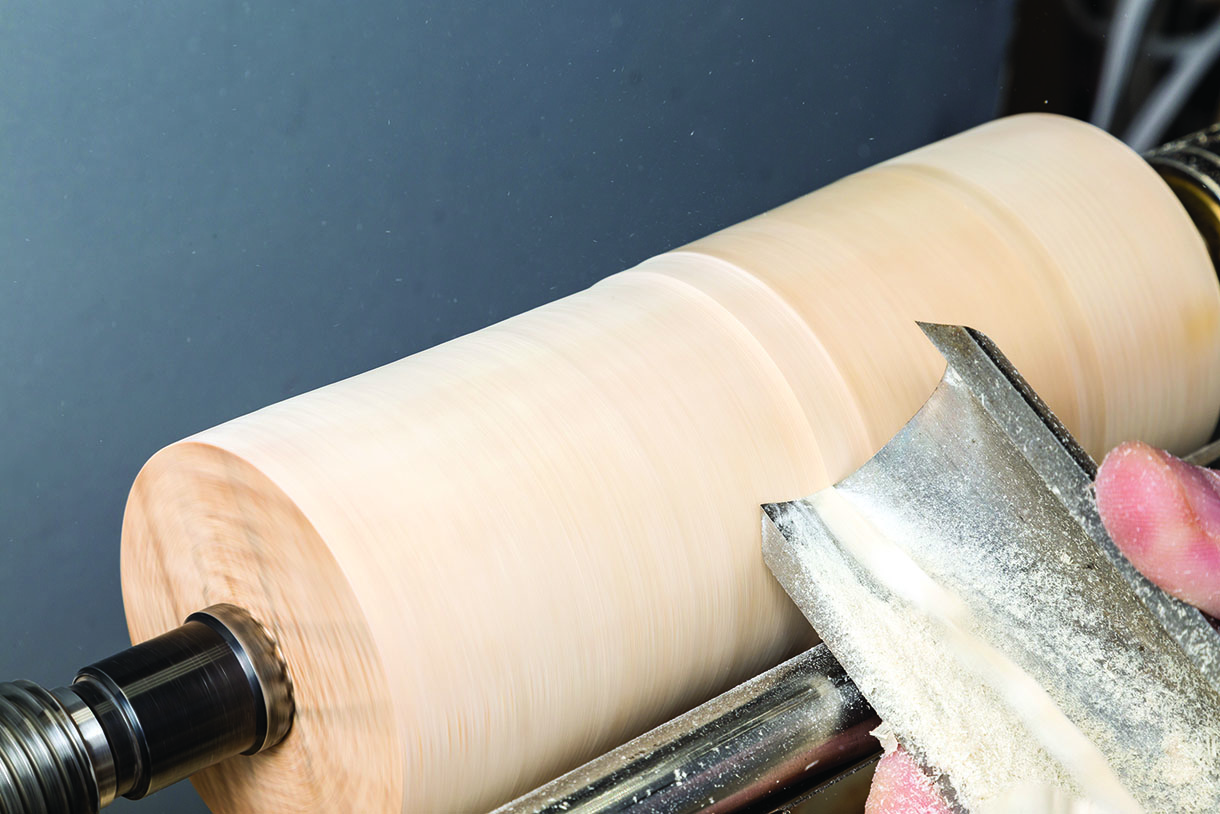
Controlled engagement is the key to nice ribbons of wood being cut away
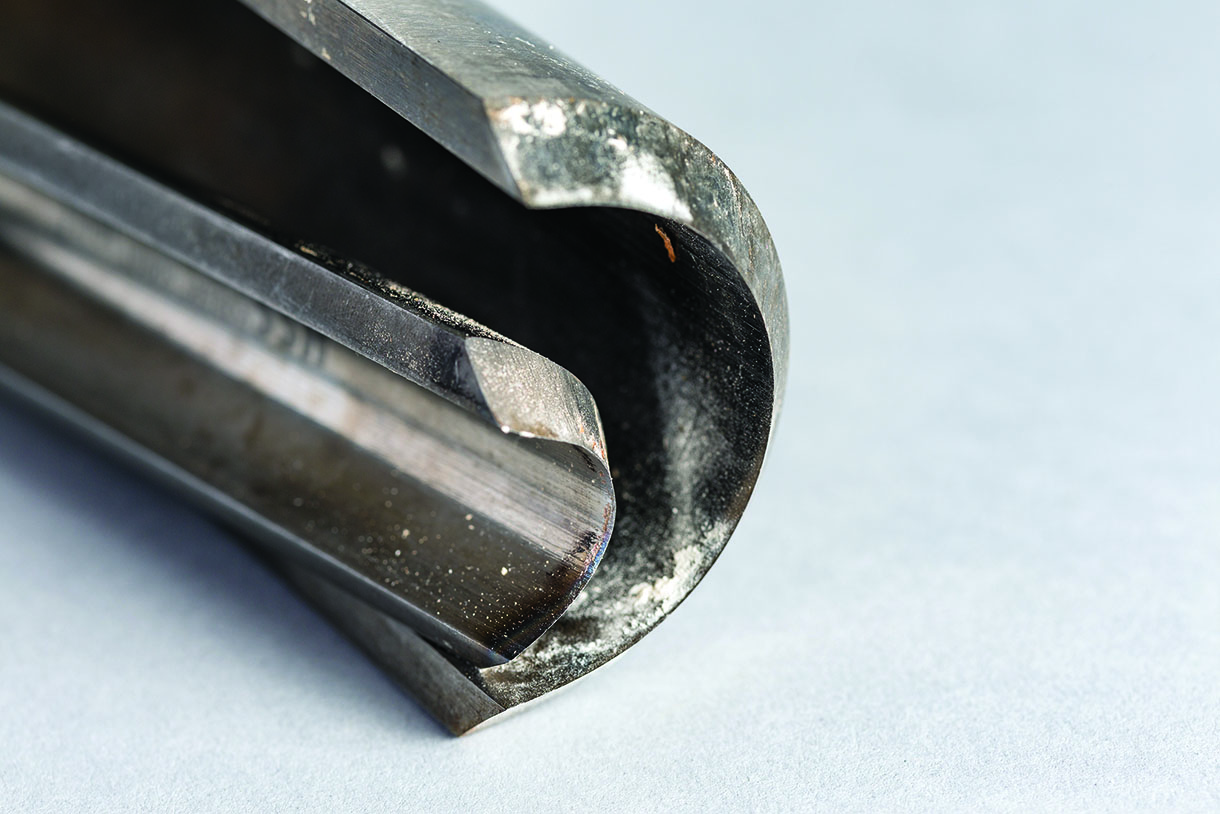
There are occasions when the smaller spindle roughing gouge is in order; less edge in the mix
Directionally correct
Did you ever wonder why hollowing rigs are designed with long dimensions behind the toolrest? The more support, mass, length, outrigger capture, there is the better the rig can perform. Reach only as far over as needed and let the rest of the mechanics and mass do the work. Over the years, several turning tool manufacturers have tried to buck the traditional tool designs. They have offered tools with beefier shafts, reduced gullet grind lengths, replaceable tool tips and adaptable handles. For the most part, none of these have gained wide acceptance. It probably is because they differed from tradition. It is one of those self-fulfilling prophecies. If a design is new or not popular yet it means low start up production volumes. Lower volumes produced mean no economy of scale and higher prices. Higher prices means lower purchased quantities and hence continued lower volumes produced.
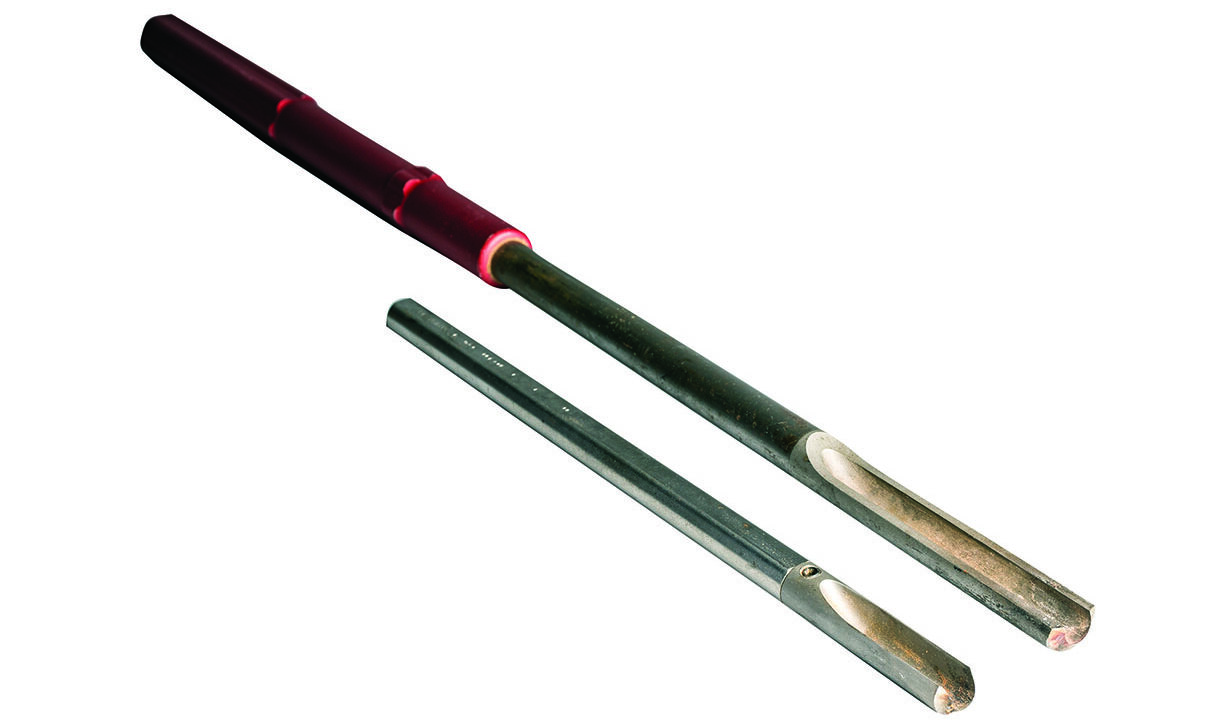
This illustrate some of the ideas for tools. Put the important steel where it needs to be. Strengthen elsewhere
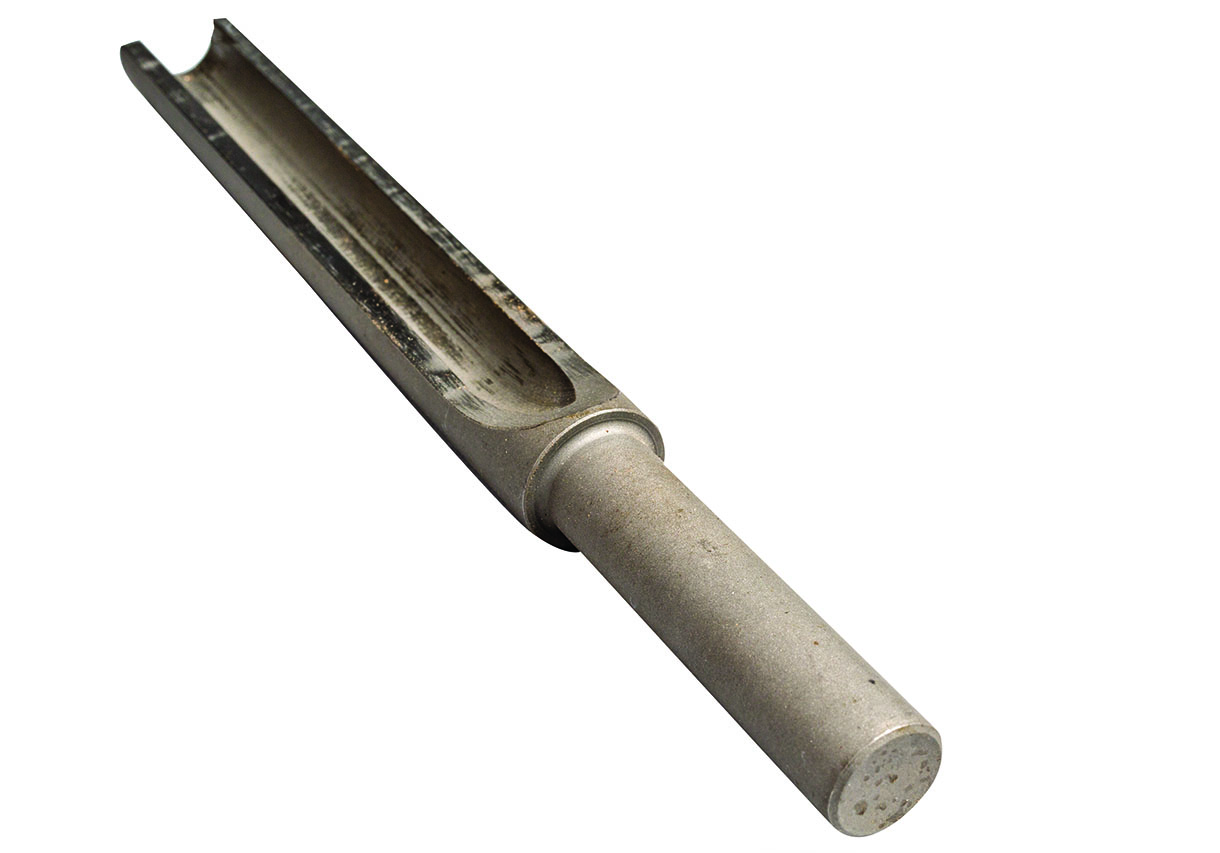
Another good idea of strengthening the area where the handle will attach
Conclusions
Hopefully I’ve made the case for using the biggest tool wins. My goal was to get you thinking about tool selection from your purchasing habits to your standard use habits. The bigger the tool, the less the vibration, the more effective and safe reach over the rest, the finer the resolution and more control, the bigger the sweet spot, the larger the bevel, the larger the cutting edge, and the stronger it is. Give it a bit of thought. Perhaps you’ll begin using the biggest tools that you can fit into the application and reap the benefits they bring to the party.


